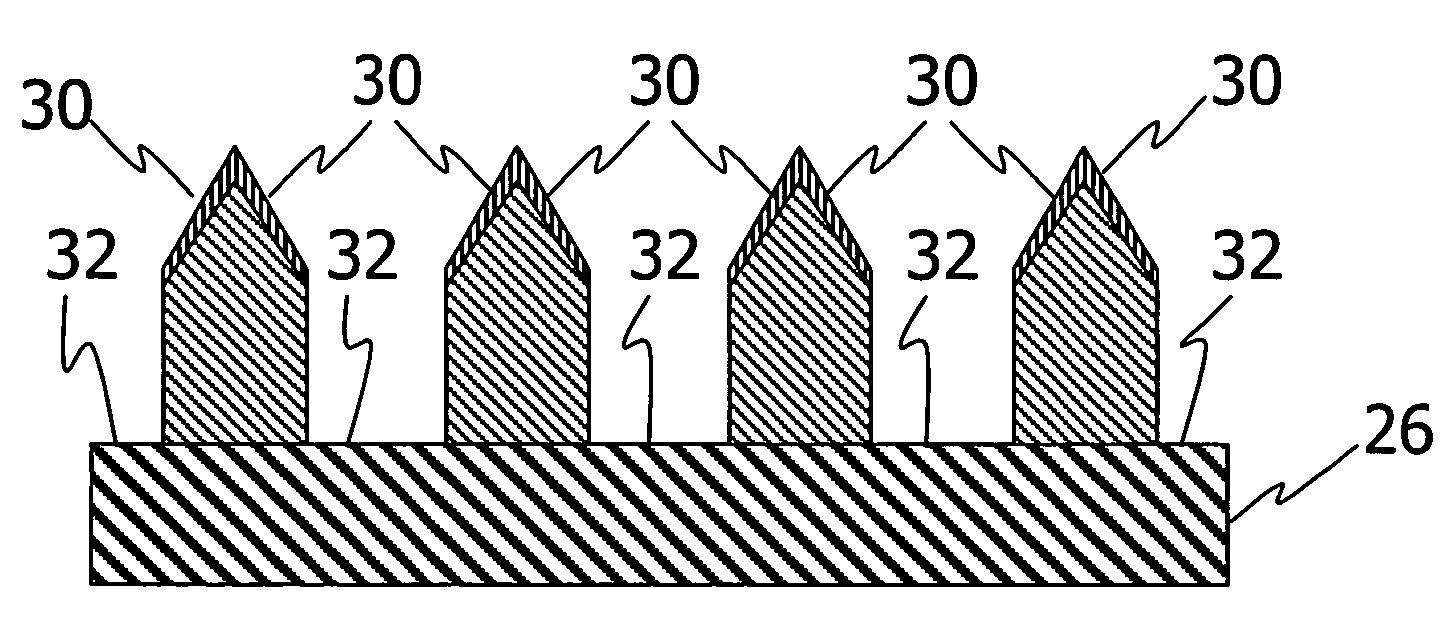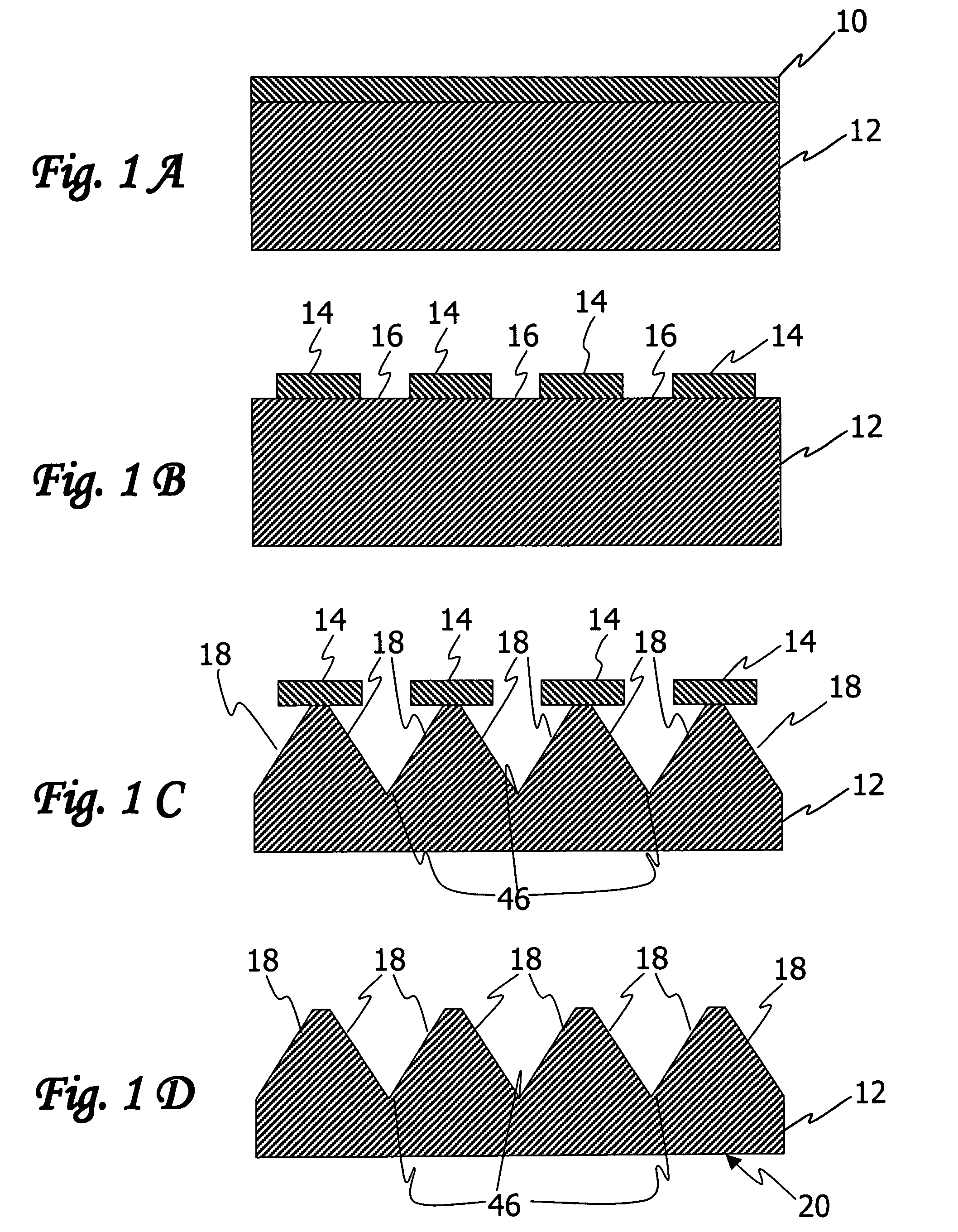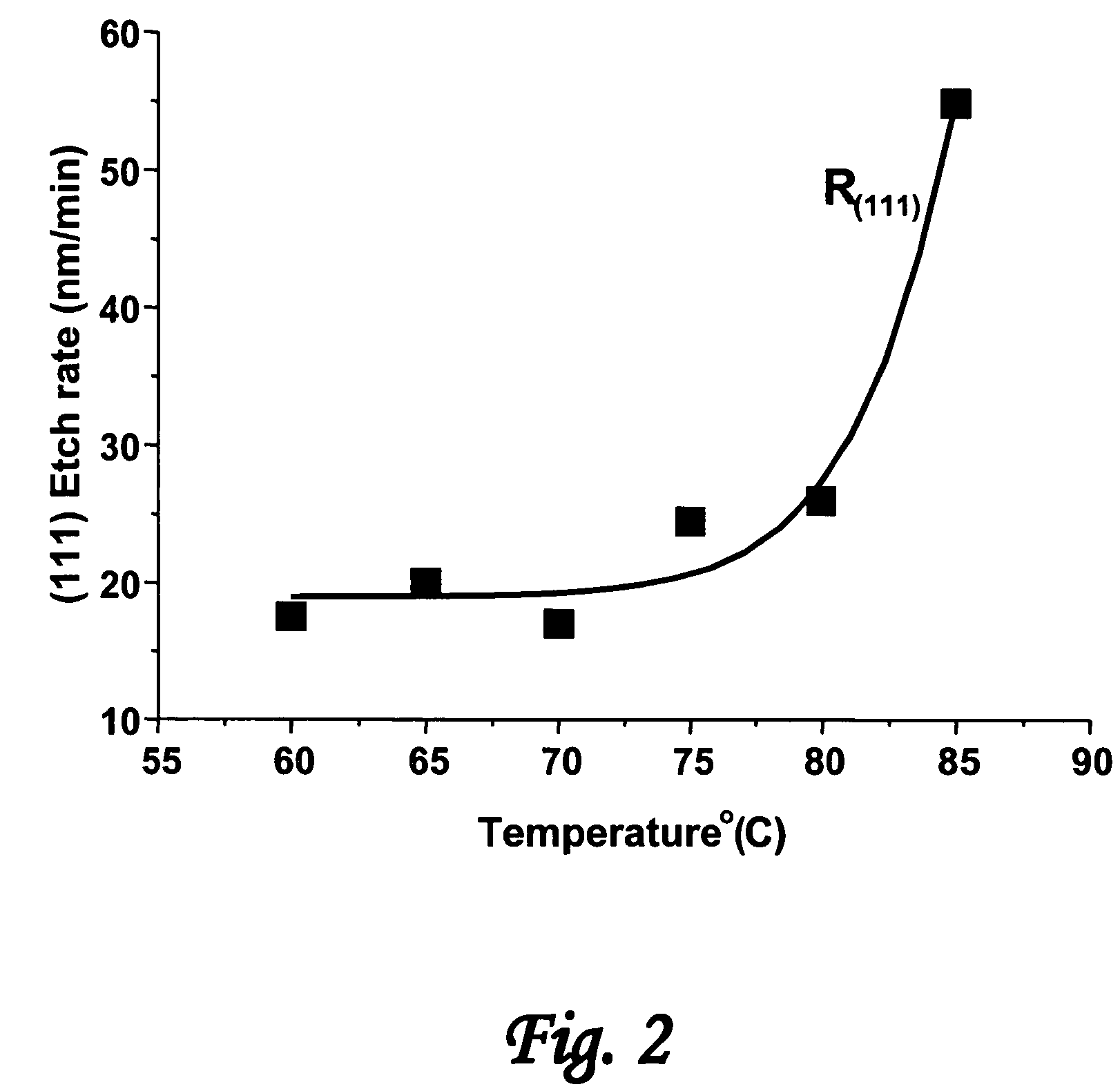Method of making an article comprising nanoscale patterns with reduced edge roughness
a nano-scale pattern and edge roughness technology, applied in the field of nano-scale pattern articles, can solve the problems of affecting the performance of bio-analytical and micro-fluidic systems, affecting the performance of optical devices, and affecting the appearance of nano-scale patterns
- Summary
- Abstract
- Description
- Claims
- Application Information
AI Technical Summary
Benefits of technology
Problems solved by technology
Method used
Image
Examples
Embodiment Construction
[0037]The description is divided into four parts. Part I describes an exemplary article having a nanoscale pattern with smooth edges and / or sidewalls, and Parts II, III and IV describe approaches for making such articles.
[0038]I. Exemplary Article
[0039]Referring to the drawings, FIG. 20 is a schematic top view of an exemplary article 100 comprising a nanoscale patterned surface 101. Typical useful nanoscale surface patterns 101 are comprised of a plurality of protruding features 102 and one or more recessed features 103 having at least one protruding feature with a minimum lateral dimension l of less than 100 nm. State of the art is less than 25 nm and as small as 10 nm or less. The depth d between a protruding feature and a recessed feature is typically less than 250 nm and can be as small as 5 nm. Molds for making the patterns have complementary patterns with correspondingly small dimensions. In accordance with the invention, the surface patterns are provided with smooth pattern e...
PUM
| Property | Measurement | Unit |
|---|---|---|
| surface roughness | aaaaa | aaaaa |
| surface roughness | aaaaa | aaaaa |
| grating period | aaaaa | aaaaa |
Abstract
Description
Claims
Application Information
 Login to View More
Login to View More - R&D
- Intellectual Property
- Life Sciences
- Materials
- Tech Scout
- Unparalleled Data Quality
- Higher Quality Content
- 60% Fewer Hallucinations
Browse by: Latest US Patents, China's latest patents, Technical Efficacy Thesaurus, Application Domain, Technology Topic, Popular Technical Reports.
© 2025 PatSnap. All rights reserved.Legal|Privacy policy|Modern Slavery Act Transparency Statement|Sitemap|About US| Contact US: help@patsnap.com



